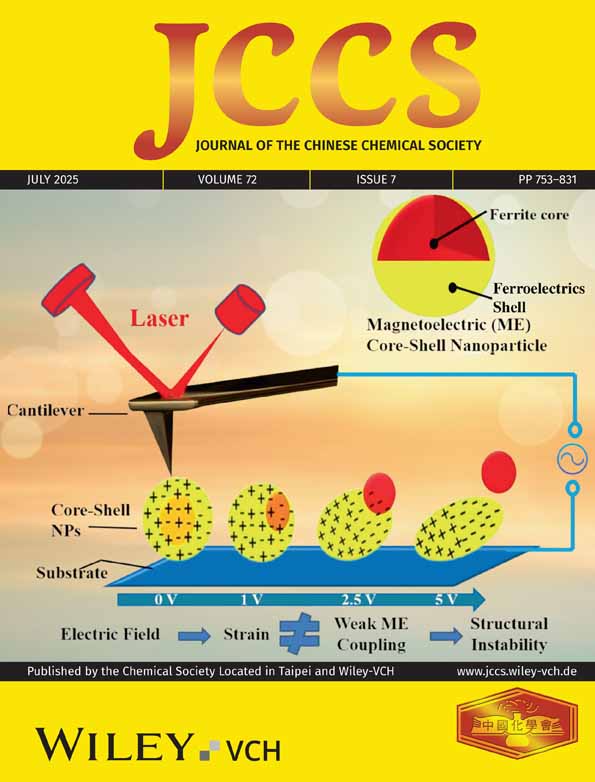Structural instability of ZnFe2O4-BaTiO3 magnetoelectric core-shell nanoparticle: An in situ analysis by PFM
Abstract
Magnetoelectric core-shell nanoparticles (ME CSNPs) have gained significant attention for their potential applications in multifunctional devices. We investigate the electrical stability of ZnFe2O4-BaTiO3 ME CSNPs (ZFO-BTO ME CSNPs) under various external bias voltages. The phase composition of the core-shell nanoparticles was determined through Rietveld refinement of X-ray diffraction data, indicating a tetragonal BaTiO3 shell and cubic ZnFe2O4 core, present in a weight ratio of 63.63:35.20. Transmission electron microscopy (TEM) analysis shows that the core is composed of ZnFe2O4 with a diameter of 30–50 nm, surrounded by a BaTiO3 shell with a diameter ranging from 100 to 400 nm. Piezoresponse force microscopy (PFM) results demonstrate that ZFO-BTO CSNPs exhibit a stable core-shell configuration up to 1 V, beyond which structural disintegration occurs. The instability of ZFO-BTO ME CSNPs is attributed to nonuniform interfacial strain, low ZnFe2O4 core magnetostriction, and a suboptimal core-to-shell thickness ratio. PFM switching studies reveal 90° domain polarization in the BaTiO3 shell. These findings provide valuable insights into the design of novel core-shell nanocomposites with enhanced magnetoelectric coupling and structural stability.
CONFLICT OF INTEREST STATEMENT
The authors declare no conflicts of interest.
Open Research
DATA AVAILABILITY STATEMENT
The data that support the findings of this study are available on request from the corresponding author. The data are not publicly available due to privacy or ethical restrictions.




